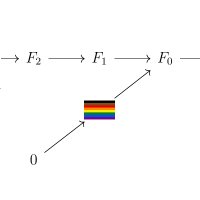
Nathan Kallus
@nathankallus
🏳️🌈👨👨👧👦 Assoc Prof @Cornell @Cornell_Tech @Netflix @NetflixResearch
causal inference, experimentation, optimization, RL, statML, econML, fairness
ID: 223440240
http://www.nathankallus.com 06-12-2010 11:56:45
325 Tweet
2,2K Takipçi
238 Takip Edilen



beyond excited to present our #NeurIPS2022 poster Thur on the implicit delta method, a surprisingly simple recipe for estimating epistemic uncertainty for evaluations based on deep models paper: arxiv.org/abs/2211.06457 poster: #327 Hall J, Thur 11am session w/ Nathan Kallus 1/6



The Machine Learning & Inference Research team I co-lead @Netflix Netflix Research is hiring PhD interns for Summer 2024. Looking for a research internship (tackling industry problems while also focusing publishable research!)? Apply thru this listing: jobs.netflix.com/jobs/300628646




🔥 Check out the new book on combining #ImpactEvaluation and #ArtificialIntelligence: 'Applied #CausalInference Powered by ML and #AI' by Victor Chernozhukov #peace 🇺🇦, C. Hansen, N. Kallus, Martin Spindler, and Vasilis Syrgkanis. Available online: causalml-book.org #EconTwitter #EpiTwitter


Delighted to see this new book 'Applied #CausalInference Powered by ML and #AI' by Victor Chernozhukov #peace 🇺🇦 , C. Hansen, N. Kallus, Martin Spindler , and Vasilis Syrgkanis, which nicely introduces the principles of Causal Inference to applied economists and health scientists. .







